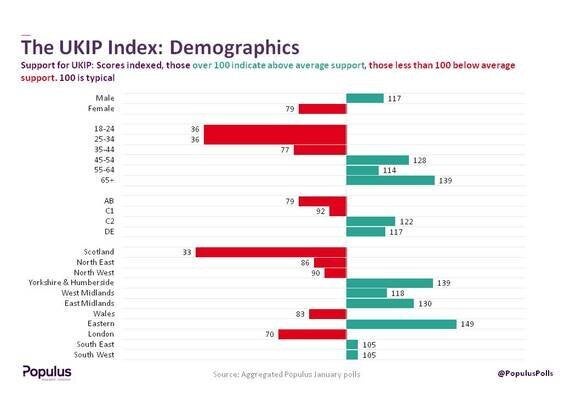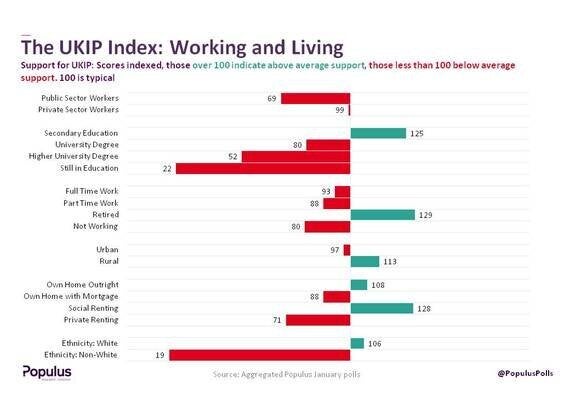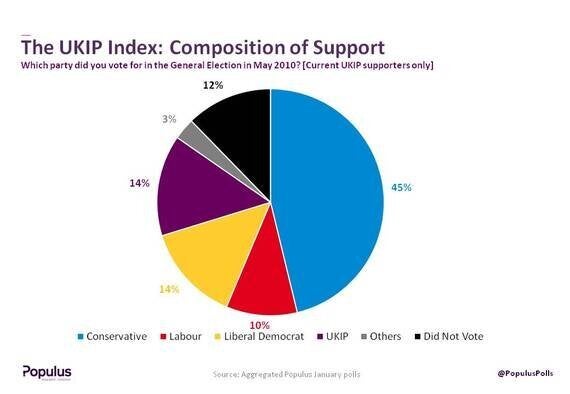For pollsters, analysts, and politicos alike, one of the most important issues ahead of May's General Election is the Ukip effect - understanding how many people will vote for the party and what impact it will have on the Election. Our January voting intention polling - analysing more than 16,000 interviews - shows Ukip on 13.2%. Support seems fairly stable, the party was on 12.6% in January 2014 and 13.4% in June 2014 after the European elections, although Lord Ashcroft's marginal seat polling suggests Ukip may have a particularly significant role in marginal seats.
Support is not, however, consistent. All parties attract more support from some groups in society than others, and Ukip is no different. We've used the same techniques we used last week for The Green Party to show these differences via an Index. In the analysis below, an Index score of 100 is average, showing the group is no more or less likely than average to vote Ukip. Scores above 100 indicate a greater level of support for Ukip, and scores below 100 a lower than average level of support.

It is clear that, demographically, Ukip supporters are more likely to be male, and to be older. Those aged 45 or older - and particularly those aged 65 and above - are more likely than average to support Ukip. Geographically, Ukip support is higher in Eastern England, Yorkshire & Humberside, and the Midlands. Support is noticeably weaker in Scotland, as well as in London.
Ukip support is substantially weaker among public sector workers, private renters, those from a non-white ethnic background, individuals still in full time education, and those with a higher university degree. Indeed Ukip support seems to decrease with educational attainment - there is a spike in support among those with secondary education. Other groups that over-index in support include retirees, renters of council or housing association homes, and individuals living in rural areas.

Many of these characteristics contrast with those of Green Party supporters - another group that has grown in recent times. Viewing our Ukip Index alongside our Green Index shows that, where UKIP supporters are older, Green Party supporters are younger. Men over-index among Ukip supporters, but women over-index among Green supporters. Ukip supporters are more likely to be retired while Green support over-indexes among students. While the two parties have both been described as offering an alternative to the three main Westminster parties, the demographics of their supporters show how they are the non-identical twins of the anti-Westminster mood.
Studying how Ukip supporters voted in 2010 demonstrates why the party represents a threat to all Westminster parties, but particularly the Conservative Party. Just 14% of current Ukip supporters voted Ukip in 2010. That leaves a very large proportion of voters moving from other parties to Ukip, and the largest source of these new Ukippers are ex-Conservative voters. 45% of current Ukippers voted Conservative in 2010. 14% voted Liberal Democrat, and 10% voted Labour.

Ukip undoubtedly attracts supporters from all walks of life - a party polling strongly just three months before a General Election must - but our Ukip Index illustrates the types of voters most likely to have been won over. It also allows us to identify a typical supporter - likely to be male, retired, a former Conservative voter, finished education at the end of secondary school, and perhaps living somewhere in Eastern England.